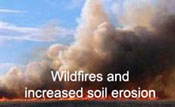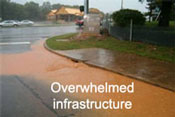Precipitation Changes
The Effect on Water Resources
Changes in the location and amount of precipitation will affect water availability and water quality.
Water availability: The net impact on water availability will depend on changes in precipitation (including changes in the total amount, form and seasonal timing of precipitation). In areas where precipitation increases sufficiently, net water supplies might not be affected or they might even increase. If the precipitation remains the same or decreases though, net water supplies would decrease. This is in part due to the predicted temperature rise in most areas, which will cause evaporation rates to increase. Where water supplies decrease, there is also likely to be an increase in demand as a result of higher temperatures, which could be particularly significant for agriculture and energy production (the largest consumers of water) and also for municipal, industrial and other uses.
Water quality: Changes in the timing, intensity and duration of precipitation can negatively affect water quality. Flooding, a result of increased precipitation and intense rain storms, transports large volumes of water and contaminants into waterbodies. Flooding also can overload storm, combined sewer and wastewater systems, resulting in untreated pollutants directly entering waterways. In regions with increased rainfall frequency and intensity, more pollution and sedimentation might be produced because of runoff. Reduced rainfall can also result in more frequent wildfires, and land areas where wildfires have occurred are more vulnerable to soil erosion.
![[logo] US EPA](https://www.epa.gov/epafiles/images/logo_epaseal.gif)


